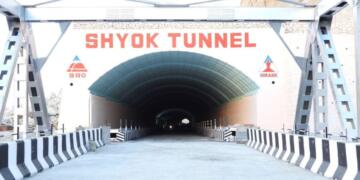In a major breakthrough for anti-Maoist operations, security forces have arrested Hidma in Odisha. The arrest, carried out in a high-stakes joint operation involving central and state agencies, marks a potentially game-changing moment in the fight against Left-Wing Extremism, officials said on Wednesday.
Hidma, was reportedly tracked down in a remote forested zone along the Odisha-Chhattisgarh border.
According to sources, the operation was guided by precise inputs gathered over weeks, combining surveillance technology with on-ground intelligence. “He was considered nearly untraceable for years. This is a landmark arrest,” a senior officer involved in anti-Naxal strategy said, requesting anonymity.
The timing of Hidma’s arrest is significant. Over the past few years, the intensity and frequency of Naxal attacks have dropped, and forces have managed to reclaim territory in previously inaccessible zones. His capture is likely to unsettle the Maoist chain of command, especially in central India.
“This is not just an operational success. It’s a psychological blow to the movement,” said a retired officer familiar with counter-insurgency operations in the Red Corridor. “Hidma was both feared and respected within the ranks. His absence could create a leadership vacuum.”
Authorities have so far declined to share operational details or comment on whether Hidma was armed or accompanied by other cadre members at the time of the arrest.
The arrest is expected to be seen as one of the most decisive actions against Naxalite leadership since the killing of Maoist politburo member Kishenji in West Bengal in 2011.
The development comes amid renewed focus on dismantling the remnants of the insurgency, which has been increasingly pushed to the margins by sustained operations and declining local support.
Security forces have intensified their campaign against Maoist insurgents across India’s Red Corridor, registering a series of major tactical and symbolic victories over the past several months. The coordinated push, combining ground operations with strategic development outreach, is being seen as part of a larger effort to decisively weaken the decades-old insurgency.
Key Developments in the Offensive
In a major breakthrough, top Maoist leader Basavaraju, believed to be the General Secretary of the CPI (Maoist), was recently killed in an encounter in Chhattisgarh. His death is considered one of the most significant blows to the Maoist movement in recent years, as he was central to both ideological direction and military strategy. Another major jolt to the insurgency came with the reported arrest of Hidma, a notorious PLGA commander responsible for some of the deadliest attacks on Indian security forces. He was allegedly apprehended in a joint operation along the Odisha-Chhattisgarh border.
Over the last few months, joint teams of the CRPF, CoBRA units, and state police forces have launched aggressive search-and-destroy missions in Naxal-affected districts of Chhattisgarh, Maharashtra, Odisha, and Jharkhand. Forest belts in Bijapur, Sukma, and Gadchiroli have been key theatres of action.
Growing pressure has led to a spike in surrenders of mid-level Maoist cadres, particularly in Telangana and Chhattisgarh. Many cited disillusionment and deteriorating internal conditions within the CPI (Maoist) as reasons.
According to security sources, the geographical spread and operational capacity of Maoist groups have significantly shrunk. With infrastructure projects like roads, mobile towers, and welfare programs reaching previously inaccessible areas, local support for Naxals is on the decline.
Forces are increasingly relying on drone surveillance, signal intelligence, and satellite imagery to track and target Maoist hideouts, reducing their ability to regroup or ambush.
While the CPI (Maoist) retains pockets of influence in dense forest regions, the elimination of key leaders like Basavaraju and the capture of Hidma are expected to weaken morale and disrupt coordination. Officials believe this could mark a turning point, but caution that vigilance is still required as splinter groups may attempt retaliatory strikes.





























